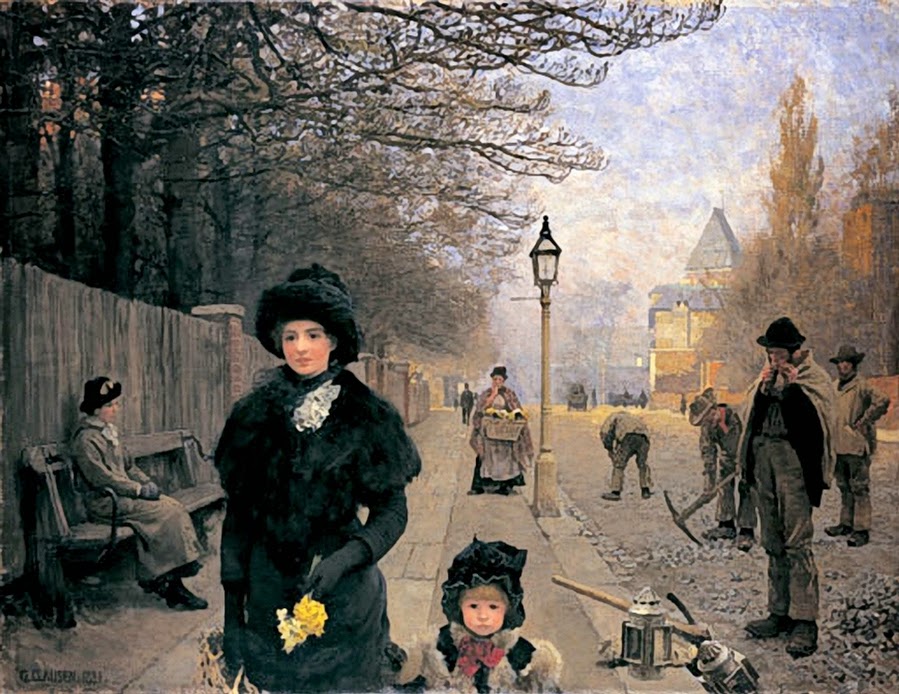Maureen Walker.
Artist: Paul Hedley
"Andrea"Acrylic
I found this painting whilst scrolling through examples of figurative art. I was immediately struck by the wonderful light and use of colour in the painting not only the skin tones but the many shades of red in the skirt and the cool blues used throughout the composition contrasting with the dark tones suggesting reflections on the floor. Although this artist does paint more complex subjects I like the simplicity of this one .
Bob Overton
Artist: Rembrandt van Rijn
The Night Watch
1642, Rijksmuseum
363 cm × 437 cm (142.9 in
× 172.0 in)
In the 18th century the
painting became known as the Night Watch although it is actually a
daylight scene, as became clear when the very thick, dark varnish was removed.
It was originally titled The Company of captain Frans Banning Cocq and
lieutenant Willem van Ruytenburch preparing to march out.
One of the most famous
paintings in the world by, in my opinion, the best painter ever to have lived
(apart from NL of course!)
This painting shows a
party of musketeers stepping from a gloomy courtyard into the blinding
sunlight. The dramatic use of light and dark tones makes this an outstanding
work. The pictorial composition is carefully managed to show the juxtaposition
of individual figures amongst groups of companions.
It is an enormous work,
full of detail, narrative and drama.
Marilyn Cooksey
Artist: Edward Hopper
Rooms by the sea,
Painted 1951 oil on canvas
101.98 x 73.66 cm - Private collection
I like the way it engenders a feeling of airy space, clever use of light and shade on an otherwise plain wall and floor manage to impart sounds and scents of sea and sunshine.
Alison Angior
Artist: Paul Nash
The Shore Dymchurch 1923
An overall impression of a "wider aspect".
Sarah Thompson
Artist: Gwilym Pritchard
Snowdon
39cm by 46cm
I love the colours he uses, which are quite unusual, bright but totally
believable. Cold and warm blue and a warm green. This painting is like a
jewel.
His shapes are strong and bold and simple but a delight. The way he uses
the palette knife produces lovely textures. The design is as important as
the subject I think.
believable. Cold and warm blue and a warm green. This painting is like a
jewel.
His shapes are strong and bold and simple but a delight. The way he uses
the palette knife produces lovely textures. The design is as important as
the subject I think.
Norma Lumb
Artist: Pablo Picasso
Girl before a mirror
I have had a print of this for many years. Last week in the MoMa (excuse me for bragging)
Jacquie Bannister
Artist: David Shevlino
Yellow Tube
30 x 33 inches
I saw the original. What amazed me was the power of the actual painting. The size, the sheer energy and confidence of the brush strokes, the colour, and the complexity of the composition were stunning.
Debra Ludlam
Artist: Andrew Salgado
"An Altered Peace"
Oil
48 x 59 inches
How can a portrait with such vibrant colours and painted in a style that seems almost random, look so good.
Maybe it's the steady gaze or strong nose, or maybe it's the pouty lips or could it be that Andrew Selgardo is just a genius !
Denise Pickles
Artist: Joan Eardley
Catterline in Winter
c1963
Oil on board
120 x 130cm
My selection is based on the
paintings scale, the way subtle suggestions have been made through texture and
mark making and for the passion with which Eardley paints: her ability to create
a dramatic atmosphere, in this example the heavy winter sky, weak glimpses of
sunshine, huddled cottages, revealing more with each viewing: I literally
shiver looking at this!
Artist: David Shevlino
Yellow Tube
30 x 33 inches
I
was initially attracted to this painting by David Shevlino because of the
nostalgic feelings it provoked. A moment has been captured and suspended to
make it last forever and all with decisive, expressive marks and the use of
bright intense colour. In places some lines are broken creating unexpected
blocks of colour to form transitions and connections which cause a cohesive
effect.






















